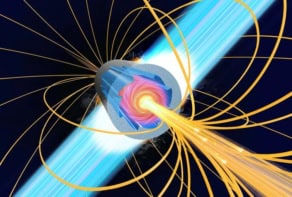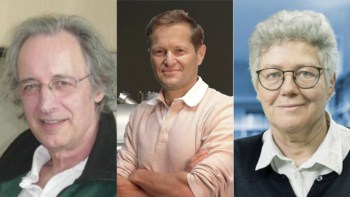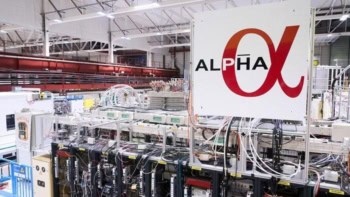X-ray pulses that last for less than a femtosecond – or 10-15 seconds – have been created for the first time by physicists in Austria. Ferenc Krausz of the University of Vienna and colleagues have used the ultra-short bursts of X-rays to probe the ionization of krypton – a process that takes place too quickly for existing techniques to detect. The breakthrough marks the transition from tracking fast molecular processes to monitoring the ultra-fast dynamics of a whole range of sub-atomic events on an attosecond – 10-18 seconds – time-scale (M Hentschel et al 2001 Nature 414 509).
Chemical reactions typically take place on time-scales measured in femtoseconds – that is, 10-15 seconds – and scientists have recently used femtosecond laser pulses to track such reactions. But processes that involve electrons – such as ionization – occur about a thousand times more quickly, and shorter pulses are needed to study them.
Femtosecond laser pulses are so short that they contain only a few oscillations of the electromagnetic field. This means it is impossible to shorten them further in order to probe electron effects. But Krausz and colleagues have overcome this problem by firing femtosecond pulses of visible light into neon gas.
As a light pulse enters the gas, it strips electrons from their atoms. These electrons oscillate briefly in the light field before colliding with the newly created neon ions to generate a flash of X-rays. But crucially, the original femtosecond pulse only pulls electrons from their parent atoms during the peaks of its optical cycles – and this makes the bursts of X-rays extremely short.
In order to measure the duration of these X-ray pulses, Krausz and co-workers directed one of them – and the original light pulse – at a krypton target. The X-rays ionize the krypton atoms, and the energies of the freed electrons depend on the electric field of the light pulse at the instant they were ejected. By introducing various delays between the arrival of the two pulses at the krypton target, Krausz’s team was able to measure the range of electron energies and establish that the X-ray pulses lasted just 650 attoseconds.
“With these attosecond pulses, we will be able to track a wide range of electron dynamics inside atoms for the first time”, Krausz told PhysicsWeb. “Together with the fundamental significance of tracing quantum jumps of electrons, they will allow the development of efficient X-ray lasers that will have a number of applications in physics, chemistry and biochemistry”.



